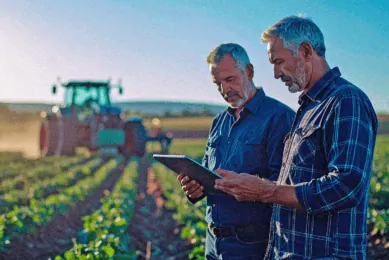Trial confirms feasibility of autonomous control in greenhouses

Researchers took another step closer to the realisation of a fully autonomous greenhouse. In a trial, an Artificial Intelligence algorithm based on Reinforcement Learning controlled the climate in a semi-commercial greenhouse resulting in a productive cucumber crop.
Anja Dieleman, AGROS project leader and researcher at Wageningen University & Research’s business unit Greenhouse Horticulture, shares a summary of the successful validation trial and its results.
“In the past two years, we worked on the building blocks for autonomously controlled cultivation of cucumbers. We determined the plant traits essential to decision-making for crop management and climate control, and chose the sensors to measure said traits. To control the greenhouse autonomously, we developed algorithms based on two approaches: a mechanistic model-based Digital Twin and a machine learning algorithm based on Reinforcement Learning,” explains Dieleman. Early this year saw the start of the validation trial: these two approaches and a growers reference were applied in a greenhouse trial with real cucumber crops to evaluate their performance at the WUR research facilities in Bleiswijk (the Netherlands).
Current grower knowledge
The climate control and crop management in the ‘growers’ compartment was based on current grower knowledge and best practices, with a pre-defined cultivation and irrigation strategy which aimed to realise balanced crop growth and production.
The basis of the strategy was the crop’s demand for assimilates, provided by sunlight, additional LED lighting, and the temperature and CO2 supply strategy. The irrigation strategy resulted in a crop with high growth at the start of cultivation. When the first flowers appeared, the fruit pruning strategy was determined based on the number of newly formed leaves and the expected light levels. The experts’ concept was to grow a vigorous crop, with the assumption that its production would compensate for the costs of electricity, heat, and CO2. “The number of fruits harvested very closely matched the predicted yield, which was based on the cultivation plan that was made at the start of the trial. It shows the robustness of the plan. This control strategy proved to be favourable: the net profit in the growers compartment was the highest,” says researcher Anja Dieleman.
Join 17,000+ subscribers
Subscribe to our newsletter to stay updated about all the need-to-know content in the agricultural sector, two times a week.



